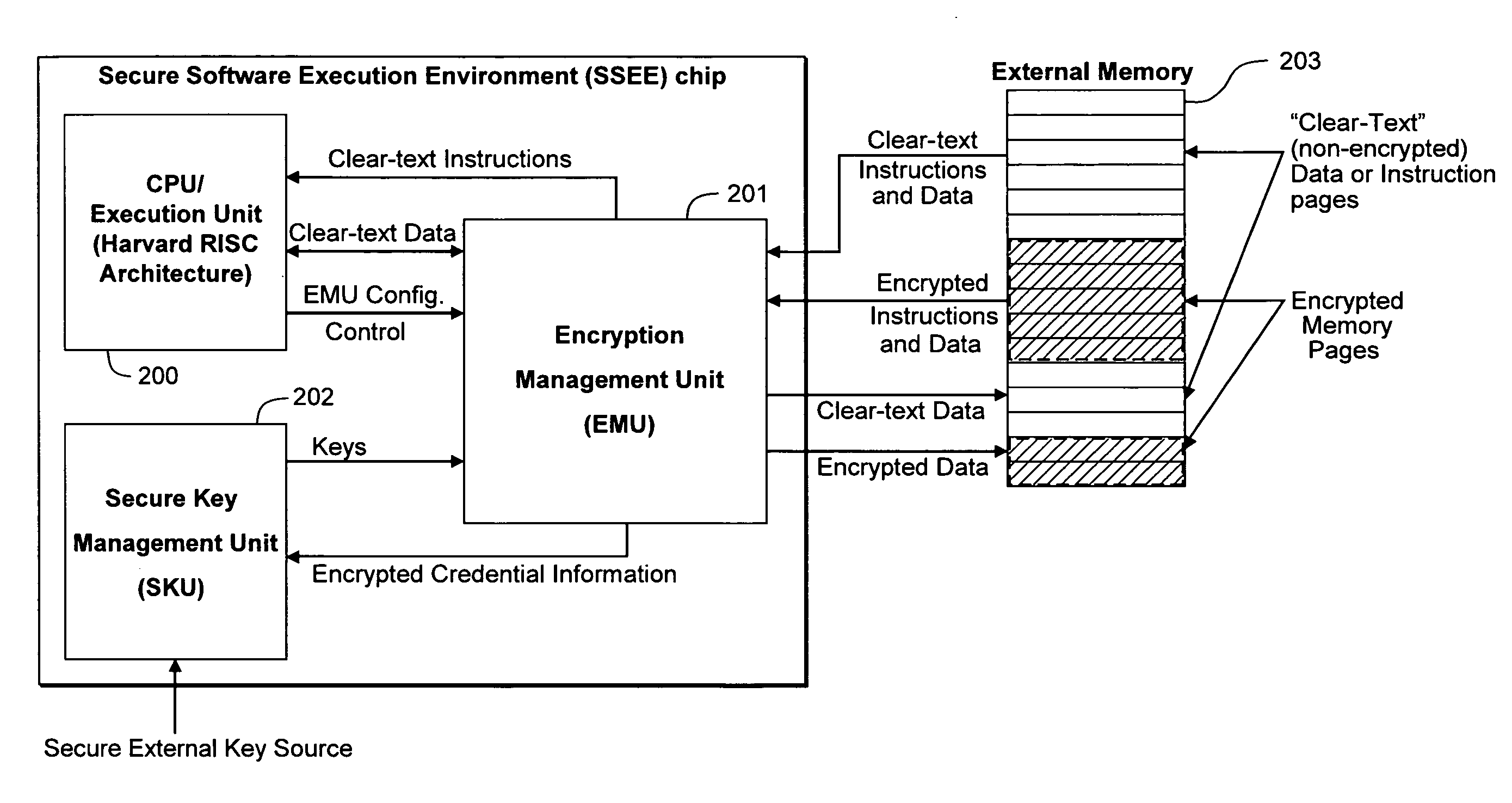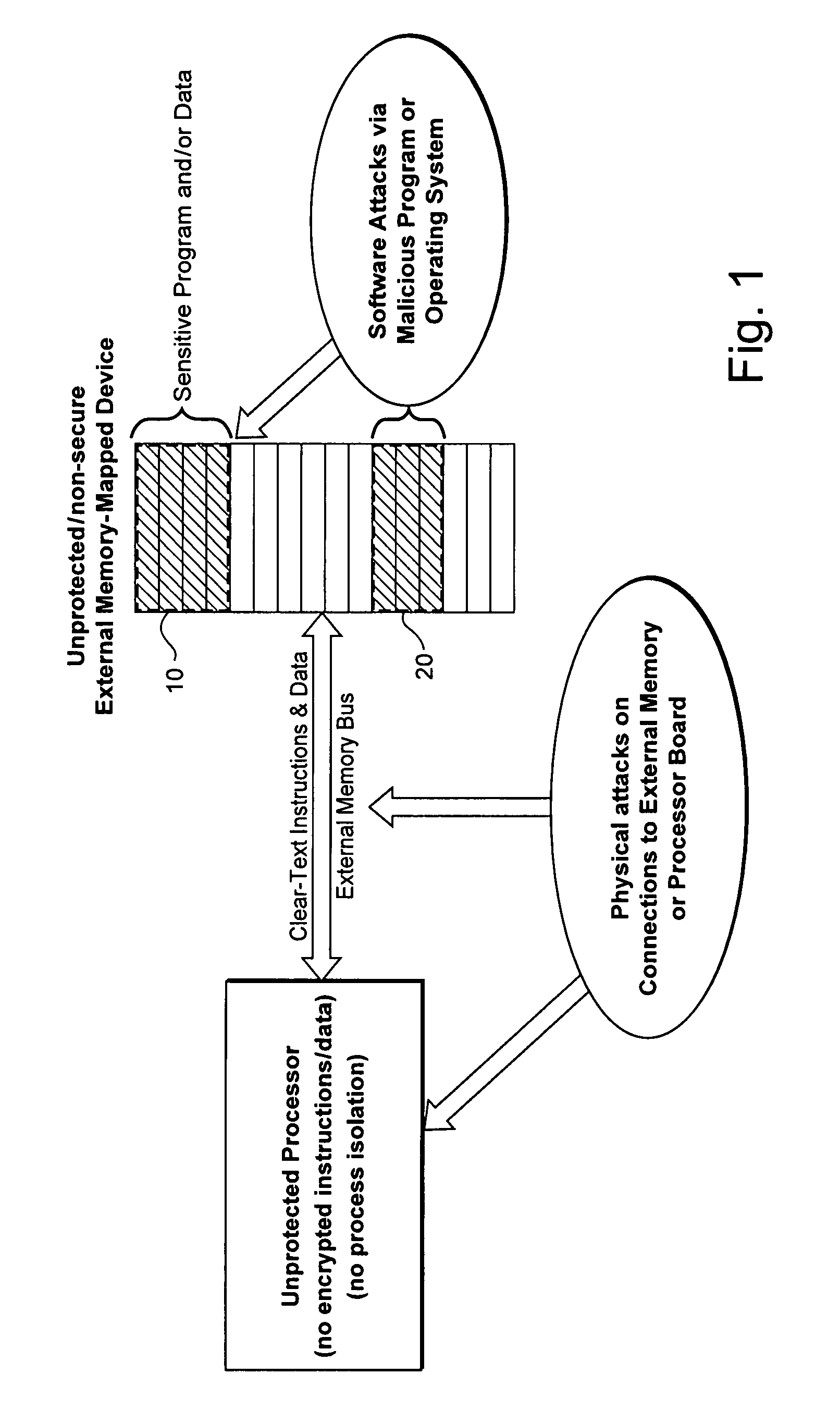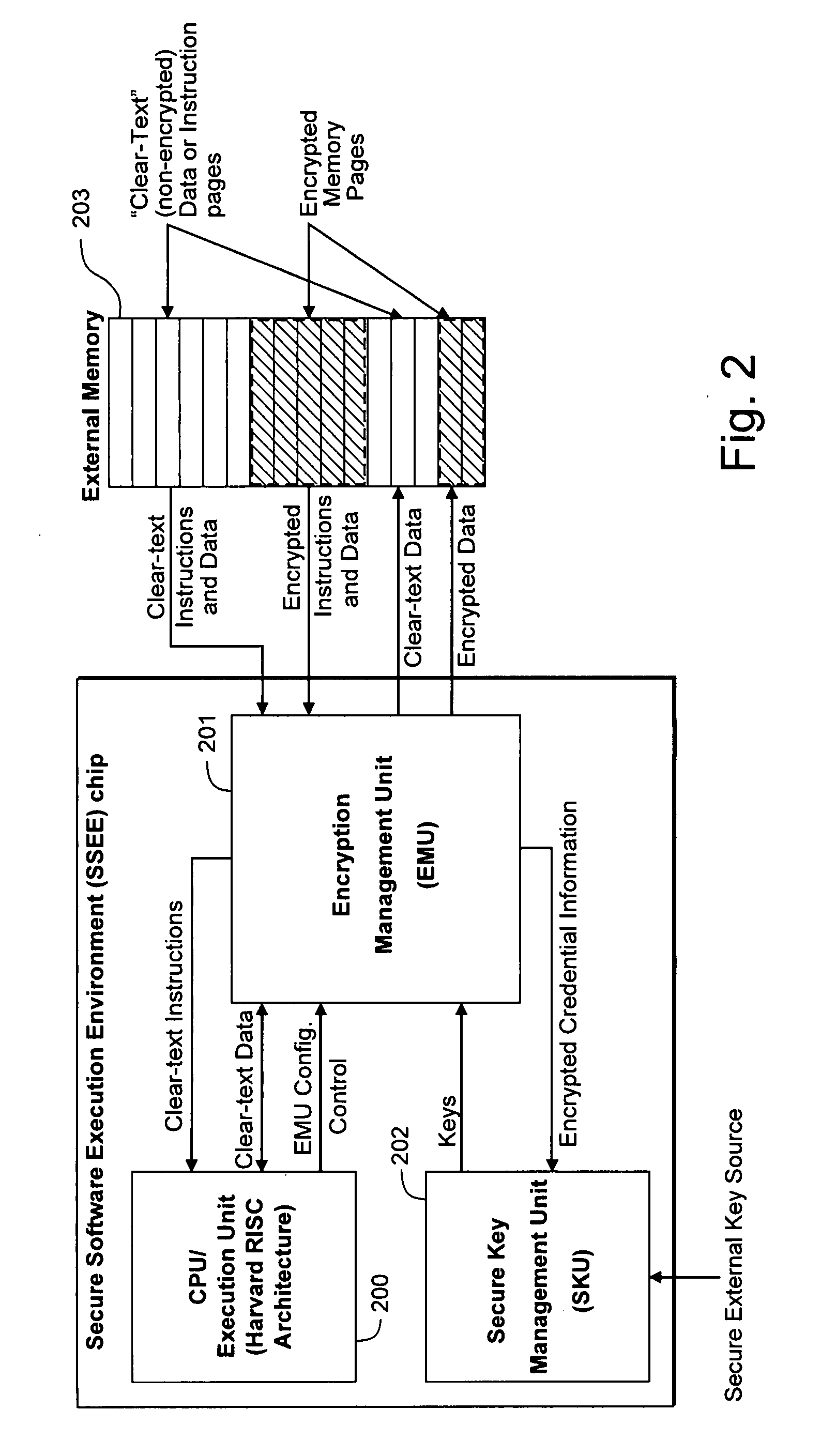Hardware-facilitated secure software execution environment
a software execution environment and hardware technology, applied in the field of software privacy and anti-tamper protection, can solve the problems of unsatisfactory security solutions, unsatisfactory security solutions of inherited trust models used by many conventional computing environment security systems, and the rest of the system trusting that module cannot no longer guarantee protection, so as to facilitate memory mapping and out of memory, prevent replay attacks, and strengthen encryption
- Summary
- Abstract
- Description
- Claims
- Application Information
AI Technical Summary
Benefits of technology
Problems solved by technology
Method used
Image
Examples
example electronic
[0043 Codebook Mode Decryption Implementation:
[0044]Basically, Electronic Codebook Mode decryption begins with a CPU request for instruction or data. If the CPU is requesting instructions, the CPU's Instruction Pathway signals the Instruction-Side Bridge Unit; if the CPU is requesting data, the CPU's Data Pathway signals the Data-Side Bridge Unit. The remainder of this example assumes the CPU is requesting data; the example would be similar if it were requesting an instruction. The request is forwarded to a memory bus arbiter within the EMU and when the bus acknowledges the transaction address, the base page of the address is supplied to the EMU's Table Unit to determine the encryption status of the memory page information. If the page is not encrypted, data in that page are passed directly to the CPU's Data Pathway for use by the CPU. If the memory page is determined to be encrypted, the encrypted information received from the Memory Bus via the Bus Interface is provided for to the...
PUM
 Login to View More
Login to View More Abstract
Description
Claims
Application Information
 Login to View More
Login to View More - R&D
- Intellectual Property
- Life Sciences
- Materials
- Tech Scout
- Unparalleled Data Quality
- Higher Quality Content
- 60% Fewer Hallucinations
Browse by: Latest US Patents, China's latest patents, Technical Efficacy Thesaurus, Application Domain, Technology Topic, Popular Technical Reports.
© 2025 PatSnap. All rights reserved.Legal|Privacy policy|Modern Slavery Act Transparency Statement|Sitemap|About US| Contact US: help@patsnap.com



